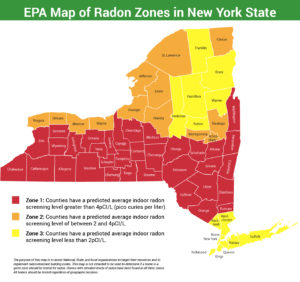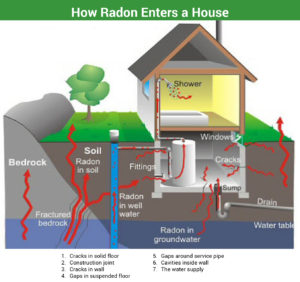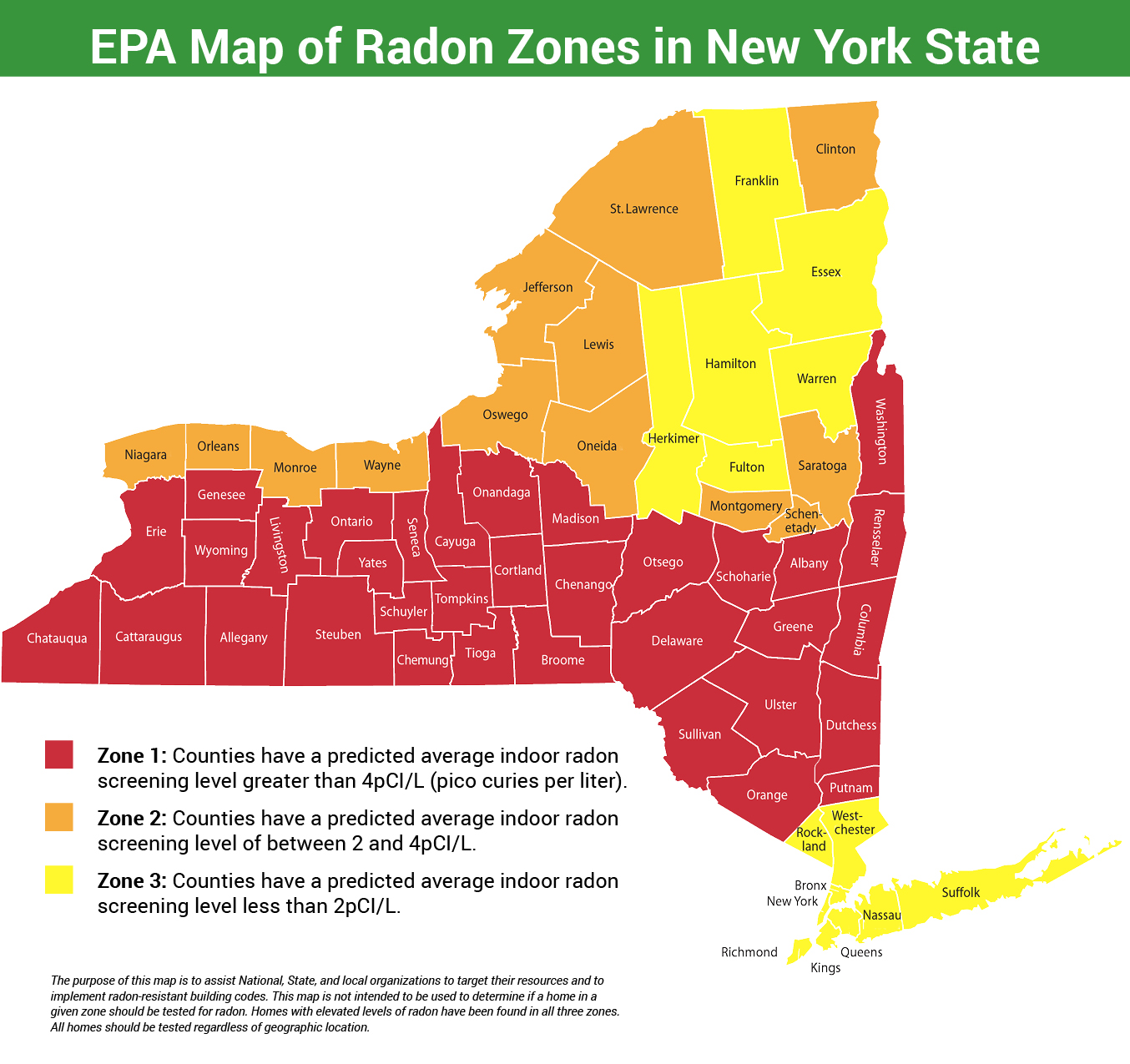Radon is a natural radioactive element, an invisible noble gas, and its periodical chart symbol is Rn. You can't see it, taste it or smell it. It is a colorless, odorless, tasteless gas that may be an undetected problem in your home or building and exists in every home and building. Radon is a naturally occurring radioactive gas produced by the breakdown of uranium in soil, rock, water and natural construction and building materials, such as Granite, stones and gravel. As Uranium breakdowns, it produces a byproduct called Radon gas.
Radon can be found all over the U.S. It can be found in any type of building — homes, offices, schools and commercial buildings. But you and your family, friends, coworkers, employees etc. are most likely to get your greatest exposure at home, where you spend most of your time.
Radon reduction systems work and in most cases, they are relatively inexpensive. Some radon reduction systems can reduce radon levels in your home by up to 99%. Even very high levels can be reduced to acceptable levels.
It typically moves up through the ground to the air above and into your home through cracks, crevasses, porous materials and other holes in your home. It may also emanate out from construction and building materials and your drinking water, particularly well water. Every home has radon! The question is how high are the levels of radon in the home of yourself, your family, your friends, and your neighbors? Click on the images below for larger image.




Absolutely, YES! Testing is the only way to know if you and your family or any occupants are at risk from radon. The Environmental Protection Agency (EPA) and the Surgeon General recommend testing all homes below the third floor for radon. Testing is inexpensive and easy. Please contact Granite Inspection Group to schedule your test today!
Any home may have a radon problem. This means new and old homes, well-sealed homes, energy efficiency homes, drafty homes, homes with or without basements and slab construction. In fact, you and your family are most likely to get your greatest radiation exposure at home. That is where you spend most of your time. Nearly 1 out of every 15 homes in the U.S. is estimated to have elevated radon levels. Elevated levels of radon gas have been found in homes in our state, county and towns. While radon problems may be more prevalent in some areas, any home may have a problem. The only way to confirm if your home has elevated levels of radon is to test. Contact us to schedule your radon test today! Call 845-635-2552.
When you breathe air containing radon, you increase your risk of getting lung cancer. Radon is a carcinogenic gas that is hazardous to inhale and to your health. Radon is estimated to cause many thousands of deaths each year. That's because when you breathe air containing radon, it can cause lung cancer. In fact, the Surgeon General has warned that radon is the second leading cause of lung cancer in the United States today. Only smoking causes more lung cancer deaths each year. If you smoke and your home has high radon levels, your risk of lung cancer is higher!
The World Health Organization (WHO), the National Academy of Sciences, the US Department of Health and Human Services, as well as the EPA, have classified radon as a known human carcinogen, because of the wealth of biological and epidemiological evidence and data showing the connection between exposure to radon and lung cancer in humans.
Radon levels can change. There are many reasons why a level could become more elevated. The building dynamics and lifestyles may vary from home to home, family to family. That is why you should always test your home annually and particularly whenever you change the building dynamics (i.e. renovations, remodeling, additions or upgrades to major systems and components of your home).


